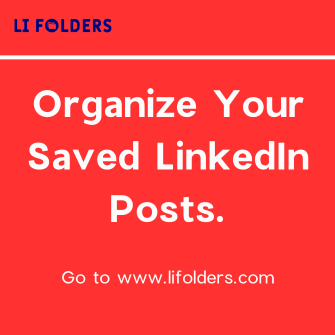
Building and maintaining trust has become a critical challenge for companies and individuals alike. Social media platforms have emerged as powerful tools for networking, content sharing, and brand building, but they also present risks of misinformation and erosion of credibility.
Amidst this dynamic social landscape, LinkedIn stands out as a professional platform that offers unique opportunities for cultivating trust and fostering meaningful connections. This article explores the significance of trust in social media, LinkedIn’s role, and actionable strategies for companies and individuals to establish and maintain trust through their social media interactions.
The Significance of Trust in Social Media
Trust is the foundation upon which successful relationships, both personal and professional, are built. Without trust, the risks are substantial – damaged reputations, loss of credibility, and diminished opportunities. Companies and individuals must prioritize trust-building strategies to navigate the social media landscape effectively and maintain their standing in their respective industries. By fostering an environment of transparency, authenticity, and value-driven interactions, you can build a loyal following and cultivate long-lasting, mutually beneficial relationships.
LinkedIn’s Unique Trust-Building Features
LinkedIn stands out among social media platforms due to its professional focus making it an ideal environment for trust-building in the business world. Several features contribute to its effectiveness in this regard:
Professional profiles: Profiles are typically tied to individuals’ professional identities, making it difficult to misrepresent oneself.
Platforms like Twitter or Facebook, users can create anonymous or fake accounts, allowing for more deceptive behavior. There are no trolls on LinkedIn.
Endorsements / Recommendations: Endorsements from colleagues and peers further reinforce profile accounts credibility and expertise.
Unlike other platforms where endorsements do not even exist, may be less formal or easily fabricated, this LinkedIn’s feature offers third party verification from other users.
Content sharing and thought leadership: LinkedIn encourages users to share relevant industry insights, research, and thought-provoking content. By positioning themselves as subject matter experts, individuals and companies can establish themselves as trustworthy sources of information within their respective fields.
Instagram and TikTok prioritize entertainment and curated lifestyle content, which may not always contribute to building professional trust.
Groups and networking opportunities: LinkedIn’s groups provide a platform for professionals to connect, engage in discussions, and share knowledge within their industries. These interactions foster a sense of community and trust among like-minded individuals.
Facebook groups, while popular, are often plagued by spam, irrelevant content, and less professional discourse.
Verification: LinkedIn’s verification process helps ensure the authenticity of user profiles, reducing the risk of fake or misleading information. This feature adds an extra layer of trust and credibility to the platform.
LinkedIn’s algorithm and content curation: LinkedIn’s algorithm prioritizes relevant and high-quality content, ensuring that users are exposed to valuable information from trusted sources. This curation process helps maintain a professional and trustworthy environment.
Platforms like YouTube or Reddit rely heavily on user-generated content, which can vary significantly in quality and reliability.
Lack of Virility: Unlike platforms such as Instagram or Twitter, where content can quickly go viral, LinkedIn’s focus on professional networking and content means that virality is less common. This can be seen as a positive, as it allows for more deliberate and thoughtful interactions.
LinkedIn Trust Building Best Practices
While LinkedIn offers a free robust platform, it is crucial for companies and individuals to employ effective strategies to maximize their efforts. Here are some best practices to consider:
Maintaining an Up-to-Date and Accurate Profile: A well-crafted and regularly updated LinkedIn profile is the foundation for establishing trust. Ensure that your profile accurately reflects your professional experience, skills, and accomplishments, and that it aligns with your personal brand. A smiling headshot doesn’t hurt either.
Example: Update your headshot every year so that it reflects the current you.
Sharing High-Quality, Relevant Content: Consistently sharing valuable and informative content positions you as a thought leader and subject matter expert in your field. Focus on providing insights, analysis, and perspectives that resonate with your target audience.
Example: Touch on a client or industry pain point and how it should be resolved.
Engaging in Meaningful Discussions and Networking: LinkedIn’s groups and networking features provide opportunities for meaningful interactions with peers, industry leaders, and potential clients or partners. Engage in professional discussions, offer insights, and build genuine connections based on mutual respect and shared interests. Reminder, this is a SOCIAL platform, be social.
Example: Comment on a post and mention what you found interesting/helpful/confusing about the post/article/insight in your comment. Liking posts is not enough.
Being Transparent and Authentic in Interactions: Authenticity and transparency are crucial elements of trust-building on social media. Avoid exaggerations or misleading claims, and strive to maintain an ethical demeanor in all your interactions.
Example: Share a hurdle you had to overcome and how you went about it.
Providing Value to Your Network: Share your knowledge, offer advice, and support others within your professional network. By demonstrating a willingness to help and contribute to the success of others, you build trust and goodwill.
Example: Post a pic of you or your team doing charity work.
Respecting Privacy and Professional Boundaries: While LinkedIn encourages connection-building, it is essential to respect the privacy and boundaries of others. Avoid unsolicited or intrusive behavior that could undermine trust and damage professional relationships.
Example: Don’t direct message a new potential client the second you connect. Get to know them first by reading what they are posting, commenting on their posts, etc. THEN you can message them.
Building trust is a prerequisite for success. LinkedIn, with its professional focus and unique features, offers a valuable platform for companies and individuals to cultivate trust and credibility within their respective industries. By implementing best practices such as maintaining an accurate profile, sharing high-quality content, engaging in meaningful discussions, and providing value to their network, users can position themselves as trustworthy and respected members of their professional communities. Embracing transparency, authenticity, and ethical conduct is crucial for fostering long-lasting, mutually beneficial relationships and achieving sustainable success.






